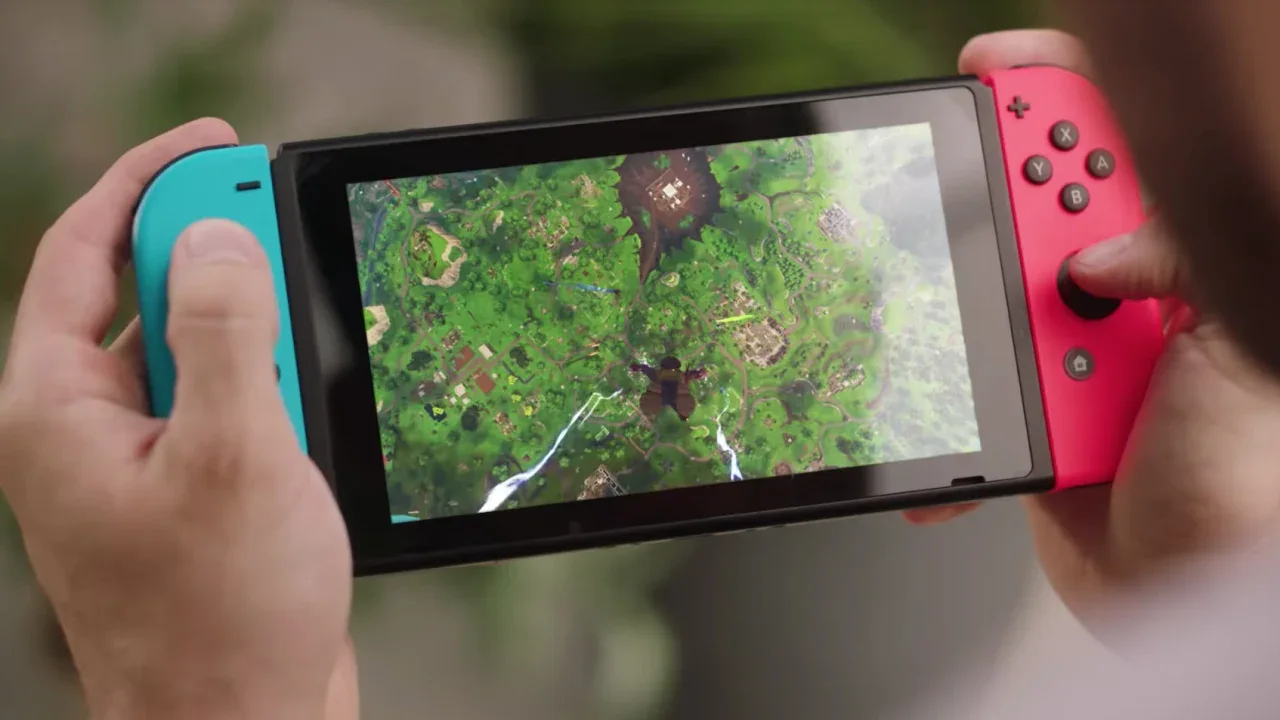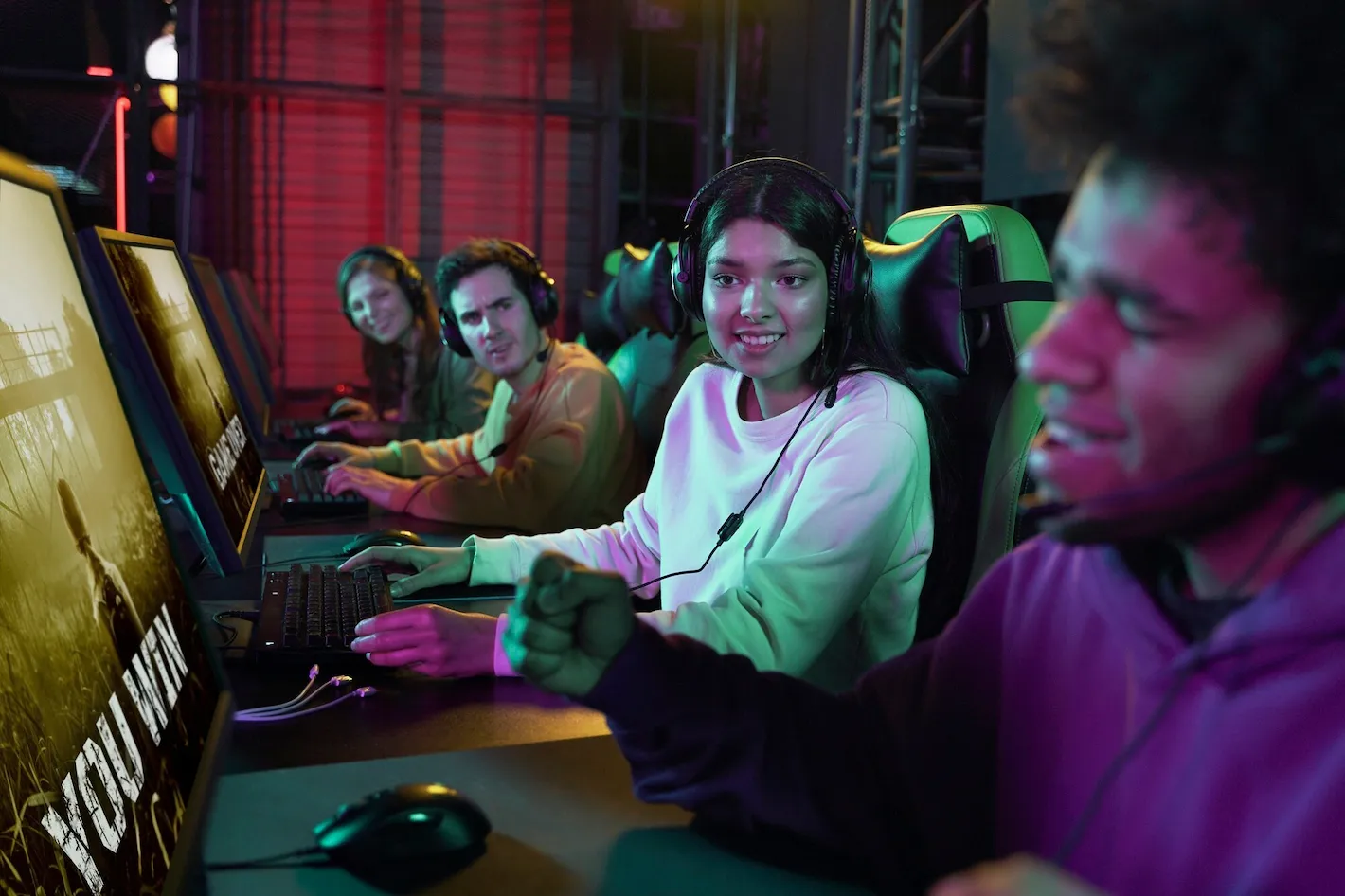Introduction — The American Mobile Gaming Boom
Over the past decade, mobile gaming in the United States has evolved from casual entertainment to a powerhouse industry driving billions in annual revenue. In 2025, the U.S. mobile gaming market surpassed $29.6 billion, accounting for nearly 52% of total gaming revenue, according to reports by Sensor Tower and Newzoo. This growth isn’t just about downloads — it’s about engagement, monetization, and cultural influence.
Players now game on the move, join live tournaments, connect with communities, and play across smartphones, tablets, and consoles. Games like MONOPOLY GO!, Royal Match, and Call of Duty: Mobile have raised the bar for handheld gaming.
American studios and global partners drive this transformation by combining creativity with data-driven insights. With mature AI, 5G, and cross-platform engines like Unity and Unreal, developers can now build scalable, high-performance games that retain users in the long term.
For companies aiming to enter or scale in the U.S. market, understanding these evolving dynamics is crucial. Partnering with an experienced Game Development Company in the USA, such as StudioKrew, can help bridge the gap between innovation and execution—from concept and design to full-scale Mobile Game Development and post-launch LiveOps.
This article covers the main trends in U.S. mobile game development, including the rise of hybrid-casual games, AI-driven gameplay, new monetization models, and what to expect as we approach 2026.
The Rise of Hybrid-Casual and Cross-Genre Games
U.S. mobile gaming now blends simple gameplay with deeper features. Quick-play hyper-casual games have evolved into hybrid-casual titles that are easy to start but offer long-term progression and features that keep players interested for months.
According to Data.ai, hybrid-casual games made up almost 30% of U.S. App Store revenue growth in 2025. Titles like MONOPOLY GO!, Survivor.io, and Royal Match start out simple but add unlockable levels, social events, and ongoing challenges. Players who used to prefer quick games now look for experiences that reward persistence, competition, and creativity.
This change comes from developers mixing genres like puzzles, RPGs, strategy, and simulation to create smooth mobile experiences. The result is a more dynamic player journey that combines easy-to-learn gameplay with deeper engagement.
For studios and publishers, this trend brings both new ideas and design challenges. Succeeding with hybrid-casual games requires data-driven design, constant improvement, and strong LiveOps skills. StudioKrew specializes in these areas, building flexible game systems and improving user experience to boost engagement and replay value.
The team uses Unity and Unreal Engine to quickly create prototypes, test with real data, and add LiveOps tools for long-term engagement. Whether it’s an idle clicker with RPG features or a social puzzle game, the aim is to make games that are easy to play but offer depth for those who want to master them.
Hybrid-casual and cross-genre games are changing not just how people play, but also how games make money, attract users, and keep them coming back. As the U.S. market grows, this blended approach will likely shape the next big mobile hits.
The Impact of AI-Driven Game Design and LiveOps
As the U.S. mobile gaming market becomes increasingly competitive, studios are turning to artificial intelligence (AI) not just as a tool but as a creative collaborator. The era of AI-driven game development has begun — where algorithms shape design decisions, personalize player journeys, and even automate LiveOps management to improve retention and revenue.
Tools like Unity Muse, OpenAI Codex, and Scenario help studios speed up development, predict player behavior, and improve engagement. McKinsey Digital’s 2025 report says using AI in game design can cut development time by up to 40% and boost retention by over 30%. This shift is changing how developers create and support mobile games.
AI’s influence extends across every stage of game creation:
- Procedural Content Generation (PCG): AI tools now craft dynamic environments, level variations, and character behaviors, reducing manual iteration.
- Personalized Player Experiences: Machine learning models analyze user behavior to deliver adaptive difficulty, custom rewards, and content tailored to individual playstyles.
- Predictive LiveOps: AI-powered analytics forecast engagement patterns and suggest optimal event scheduling or monetization triggers.
For innovative studios, integrating AI is about amplifying creativity. StudioKrew leads with AI-enhanced Unity Game Development Services that streamline design and LiveOps. Our tools empower teams to adapt games post-launch—improving balance, content, and retention with actionable, real-time insights.
AI is changing LiveOps by making it predictive instead of just reactive, from smarter enemy behavior in RPGs to automated A/B testing for monetization. Now, it’s about anticipating player trends and staying ahead.
Throughout 2025, AI will continue to change how U.S. mobile game developers innovate, improve, and engage players. Studios that want to compete need to use AI tools to succeed in the long run.
Monetization Trends — Beyond Ads and In-App Purchases
For years, the U.S. mobile game economy revolved around ads and in-app purchases (IAPs). But by 2025, that model began to plateau. Players expect more meaningful value exchanges, and developers are responding with diversified, player-first monetization ecosystems that emphasize engagement over interruption.
According to Sensor Tower’s 2025 Mobile Gaming Report, hybrid revenue models — combining IAPs, subscriptions, and event-based systems — drove over 58% of App Store gaming revenue in the U.S. The modern player no longer wants intrusive ads; they want reasons to invest in progression, customization, and community.
Here’s how the landscape is evolving:
1. Battle Passes and Seasonal Economies
Borrowed from console and PC ecosystems, Battle Pass systems have become a U.S. standard for mobile retention. Games like Call of Duty Mobile and Clash Royale demonstrate how time-limited progression keeps players returning daily. Seasonal missions and cosmetic unlocks now drive more predictable recurring revenue than traditional IAP packs.

2. UGC and Creator-Led Economies
User-generated content is the next frontier of mobile monetization. Platforms are integrating UGC toolkits that let players design skins, maps, or events — earning revenue shares in return. This co-creation trend empowers communities and extends a title’s life cycle far beyond launch.
3. Subscription and Membership Models
The success of Apple Arcade and Netflix Games proved that subscription-based access is viable for the U.S. audience. Mid-core and hybrid-casual studios are now experimenting with loyalty passes that grant boosters, ad-free play, or early access to content. Subscriptions also help stabilize revenue, protecting developers from CPI fluctuations.
4. Engagement-Based Rewards and Social Monetization
Reward-based mechanics — daily streaks, team challenges, or friend referrals — are replacing static ads. Games with social features see up to 40% higher retention, according to GameAnalytics 2025.
5. Progressive Payments and OTT-Inspired Interactive Gameplay
A rapidly growing trend in the U.S. market is progressive payment systems, where players unlock each new episode or level by completing tasks or subscribing, much like OTT platforms such as Netflix or Prime Video. These interactive narrative-based games merge cinematic storytelling with gamified decision-making, giving players a reason to keep exploring both the story and its monetization layers.
OTT-inspired mobile experiences are gaining a massive fan following, blending entertainment and interactivity into a single ecosystem. The player might watch a storyline unfold, make choices, or even pay to access the next chapter — effectively merging gaming and binge culture.
StudioKrew recently developed a unique game based on this model, offering progressive gameplay in which users watch a sequence of videos and answer interactive questions that challenge them to predict what happens next. While the game’s title is confidential due to copyright agreements, you can contact StudioKrew to request a private demo of this interactive experience.
This innovative model bridges the worlds of gaming and OTT entertainment, showing how storytelling-driven games are opening entirely new monetization and engagement possibilities in the U.S. mobile ecosystem.
Cloud Gaming and 5G Expansion Shaping New Player Behavior
The fusion of cloud gaming and 5G connectivity is reshaping how American players experience mobile games — turning smartphones into high-performance gaming consoles. With ultra-low latency, faster data transfer, and edge computing, 5G is eliminating traditional barriers like storage limitations, heavy downloads, and hardware constraints.
According to GSMA Intelligence, over 75% of U.S. mobile users will have access to reliable 5G coverage by the end of 2025, unlocking the potential for real-time multiplayer experiences, high-fidelity visuals, and seamless cross-platform synchronization. Players now expect to jump from mobile to console to PC without losing progress — and cloud streaming technology is making that possible.
1. The New On-Demand Gaming Experience
Just like Netflix revolutionized video streaming, cloud platforms such as Xbox Cloud Gaming, NVIDIA GeForce Now, and Amazon Luna are transforming mobile game distribution. Instead of downloading multi-gigabyte files, players can instantly access full-scale games through servers — making premium experiences more accessible.
This trend is particularly strong in the U.S., where cross-device engagement has become the new norm. Players demand mobility without compromise — playing high-quality 3D titles on the go with console-grade performance.
2. 5G-Powered Real-Time Multiplayer
5G’s bandwidth and ultra-low latency (as low as 10 milliseconds) are enabling smoother real-time interactions in competitive multiplayer and social co-op games. Genres like racing, FPS, and live trivia are benefiting the most, as network reliability enhances fairness and responsiveness.
For developers, this creates opportunities to experiment with persistent worlds, real-time events, and synchronous PvP mechanics that previously required console or PC hardware.
3. Cross-Platform and Cloud Save Ecosystems
The U.S. audience is increasingly favoring games that maintain progress across devices. Players can start a session on mobile and continue on a tablet, smart TV, or browser — thanks to cloud sync and unified identity systems.
StudioKrew’s Game Development Company USA services are designed to support this seamless integration using Unity’s cloud architecture, Photon Fusion, and scalable backends. These systems not only handle concurrent users efficiently but also optimize server performance for global deployment.
4. Democratizing High-End Gaming
Cloud technology is also leveling the playing field for indie developers and small studios. By offloading rendering and computation to the cloud, teams can launch AAA-quality visuals without investing in expensive hardware pipelines. This democratization will likely accelerate innovation in the U.S. mobile gaming sector, leading to a broader range of visually impressive, technically advanced titles.
As 5G networks expand and cloud ecosystems mature, the boundaries between devices, platforms, and experiences continue to blur. The next wave of mobile games will not just run on phones — they’ll exist across a connected ecosystem where performance, persistence, and social interaction converge.
At StudioKrew, our expertise in mobile and cross-platform game development helps studios harness the power of cloud and 5G technologies to create scalable, engaging, and future-ready games.
The Social Core — Multiplayer, Community, and Live Engagement
In 2025, the most successful mobile games in the U.S. aren’t just games — they’re social ecosystems. The rise of multiplayer connectivity, player-driven communities, and live engagement features has transformed gaming into a shared cultural experience. Players no longer just “play” — they connect, compete, collaborate, and create within persistent digital spaces.
According to Data.ai’s U.S. Mobile Gaming Index 2025, titles with strong social and multiplayer components record up to 2.5x higher retention than traditional single-player games. Whether it’s real-time co-op, asynchronous challenges, or team-based tournaments, social integration has become the defining element of the modern mobile experience.
1. Multiplayer Is the New Default
From PUBG Mobile to Stumble Guys and Roblox, multiplayer experiences dominate the U.S. charts. Players crave shared excitement — short bursts of competition with friends or strategic co-op gameplay that fosters teamwork and rivalry.
For developers, mobile is no longer a “secondary” multiplayer platform — it’s the frontline of connected gaming. Studios are investing heavily in low-latency server architecture, skill-based matchmaking, and anti-cheat mechanisms to ensure fair and engaging gameplay at scale.

2. Building Micro-Communities Inside Games
Modern mobile titles are evolving into community hubs, where players form friendships, alliances, and long-term engagement loops. Features such as guild systems, in-game chat, and team-based progression build emotional investment and brand loyalty.
These micro-communities often become organic marketing engines — where fan tournaments, Discord groups, and player-created content fuel ongoing awareness without paid promotions.
StudioKrew integrates real-time social layers and LiveOps infrastructure within its multiplayer projects. Our Game Development Company in Chicago specializes in building multiplayer ecosystems that scale globally — from casual two-player experiences to persistent tournament-ready platforms.
3. LiveOps as an Engagement Engine
The American mobile gaming market rewards studios that evolve post-launch. LiveOps — the real-time management of events, rewards, and challenges — keeps content fresh and communities active. Successful titles operate like live services, constantly fine-tuned by player data and feedback.
At StudioKrew, our LiveOps Game Development Solutions leverage analytics-driven event design and automated scheduling to sustain engagement. Personalized missions, limited-time drops, and leaderboard resets ensure every session feels fresh and rewarding.
4. Creator Integration and Social Media Synergy
Today’s players aren’t just consumers — they’re creators. Platforms like Twitch, TikTok, and YouTube Gaming have blurred the line between gaming and entertainment. Developers now design with shareability in mind — adding replay editors, spectator modes, and auto-highlight features.
This synergy between gaming and influencer culture drives exponential reach. According to GameRefinery 2025, games that integrate seamless social sharing see 3–4x higher organic downloads and stronger user retention through peer validation.
5. Personalized Social Experiences and Player Expression
The next step in U.S. social gaming is all about identity and personalization. Players want to stand out by using custom avatars, cosmetic rewards, or emotes that showcase their personality.
Modern matchmaking systems now use AI-driven sentiment and playstyle data to pair compatible players, fostering healthier, more enjoyable interactions. Games like Fortnite and Roblox have led the charge, turning self-expression into a form of engagement currency.
StudioKrew designs its multiplayer frameworks with player expression in mind — from avatar customization systems and social profiles to in-game recognition mechanics. Our goal is to help developers create experiences that go beyond competition — where players connect through shared identity, creativity, and belonging.
In summary, the future of mobile gaming is social, personalized, and community-focused. Developers who focus on connection, teamwork, and player identity will shape the next wave of top games.
At StudioKrew, our expertise in multiplayer game development and LiveOps management empowers studios across the U.S. to build immersive, scalable worlds that connect millions of players in real time.
Regional Hotspots — California, Chicago, Omaha, and Illinois as Emerging Development Hubs
The U.S. mobile gaming industry is growing thanks to both national innovation and local hubs. Cities like California, Chicago, Omaha, and Illinois are helping shape new studios, incubators, and partnerships, making them key centers for mobile gaming.
1. California — The Innovation Powerhouse
California continues to lead as the heart of the American gaming ecosystem. Home to industry giants, venture-backed startups, and cutting-edge tech accelerators, the region sets global benchmarks in AR/VR integration, real-time rendering, and monetization innovation.
From Los Angeles to San Francisco, studios are experimenting with AI-assisted production, 5G-powered cloud gaming, and hybrid-casual storytelling models. California remains the launchpad for global trends, influencing not just what players play, but how games are designed, distributed, and monetized.
For brands looking to enter the West Coast market, partnering with a Game Development Company in the USA, like StudioKrew, ensures access to scalable, cross-platform expertise rooted in industry best practices.
2. Chicago — The Creative-Technical Balance
Chicago has emerged as the Midwest’s gaming innovation hub, known for its balance of creativity and robust engineering culture. The city’s focus on multiplayer architecture, LiveOps design, and real-time analytics makes it a top destination for hybrid game development.
At StudioKrew’s Game Development Company in Chicago, our team helps studios bring high-quality mobile and cross-platform experiences to life — combining advanced gameplay systems with real-time social engagement. Chicago’s strong network of universities, creative agencies, and tech communities continues to attract new talent and investment into the gaming sector.
3. Omaha, Nebraska — The Emerging Tech Frontier
Omaha is fast becoming an unexpected success story in the American gaming landscape. With a growing number of tech startups and a favorable business environment, Omaha offers a cost-effective yet technically sophisticated base for small- to mid-sized studios.
As broadband and cloud infrastructure expand across the Midwest, the city’s gaming studios are gaining visibility for building competitive, scalable mobile experiences.
StudioKrew, a game development company in Omaha, Nebraska, has worked closely with U.S.-based partners to develop casual, educational, and entertainment-focused games for global audiences. Omaha represents the new wave of accessible, innovation-friendly development centers shaping America’s gaming future.
4. Illinois — Where Engineering Meets Experience Design
Illinois is rapidly evolving into a cross-disciplinary hub where engineering precision meets creative storytelling. From interactive entertainment to serious gaming applications, Illinois-based developers are leveraging Unity, Unreal, and custom engines to push the limits of gameplay and immersion.
At StudioKrew, our Game App Development Company in Illinois focuses on helping brands and studios prototype, optimize, and scale games that align with the state’s growing focus on educational games, simulation systems, and AR-based experiences.
Together, these regions showcase the diversity of talent and innovation driving the U.S. gaming industry forward. Whether it’s Silicon Valley’s visionary studios, Chicago’s real-time multiplayer specialists, Omaha’s agile developers, or Illinois’s hybrid engineering teams, the collective ecosystem is shaping the future of global mobile gaming.
With a strong presence in these markets, StudioKrew connects global expertise with U.S. creativity and technical skills, helping brands create top-quality mobile games that are built locally and scaled worldwide.
Player-Centric Design and Inclusive Gaming
The new era of U.S. mobile gaming is defined by player-centric design — where every interaction, reward, and visual element revolves around the player’s comfort, accessibility, and identity. In 2025, user expectations are no longer limited to performance or graphics; players expect games to be inclusive, emotionally engaging, and ethically designed.
A Newzoo 2025 Player Insight report found that 64% of U.S. gamers prefer games that show diversity and accessibility, and 58% are more loyal to brands that share their values. This shows that inclusivity is now a core design principle, not just a feature.
1. Designing for Accessibility
Accessibility now sits at the core of game UX. U.S. studios are integrating color-blind modes, haptic cues, adaptive controls, and voice guidance systems to ensure every player can enjoy a complete experience regardless of physical or cognitive ability.
At StudioKrew, our Game Development Services include accessibility testing and usability audits for both casual and mid-core titles, ensuring seamless gameplay across diverse audiences and devices.
2. Representation and Inclusive Storytelling
Representation has become an influential driver of engagement. From character customization to gender-neutral avatars, developers are focusing on authentic narratives and cultural nuance. Games like Life Is Strange and Marvel Snap have shown that inclusivity broadens audience reach without compromising creativity.
By blending diverse characters, relatable plots, and adaptive voiceovers, StudioKrew helps studios create experiences that resonate with wider player communities.
3. Ethical Monetization and Player Well-Being
Today’s players care about fairness. Aggressive paywalls and manipulative rewards are losing popularity in the U.S. market. The focus is now on ethical monetization—systems that respect players’ time and balance fun with transparency.
StudioKrew implements data-driven, non-intrusive monetization systems that align with player expectations while sustaining long-term revenue growth.
4. Emotional UX and Data-Driven Personalization
Beyond inclusivity, the next layer of player-centric design is emotional connection. Through real-time analytics, adaptive music systems, and responsive interfaces, developers are learning how to match gameplay intensity with player sentiment.
Our team integrates AI-based engagement tracking within mobile experiences, helping studios personalize progression and difficulty to keep players immersed, not overwhelmed.
5. Building Community-First Experiences
Inclusivity doesn’t stop at accessibility; it extends to community safety and moderation. Games with strong anti-toxicity systems, filtered chats, and community codes of conduct retain players longer and build brand trust.
StudioKrew designs multiplayer backends with real-time moderation and sentiment analysis to ensure positive social engagement inside the game environment.
Ultimately, inclusive design isn’t just a moral responsibility — it’s a competitive advantage. As the U.S. gaming audience grows broader and more diverse, developers who put empathy and accessibility at the forefront will capture the next wave of loyal players.
At StudioKrew, we champion the philosophy of “designing for everyone.” Our Game Development Company USA team ensures every game we build is accessible, representative, and emotionally resonant — creating digital experiences that truly connect people through play.
What’s Next: AR, MR, and AI-Native Mobile Games
The U.S. mobile gaming market is entering a new dimension — one where Augmented Reality (AR), Mixed Reality (MR), and AI-native development converge to create experiences that are more immersive, adaptive, and intelligent than ever before.
What was once experimental technology has now evolved into a mainstream opportunity. With hardware innovations like Apple Vision Pro, Meta Quest 4, and Snap’s AR Glasses, along with breakthroughs in AI-assisted game design, developers are reimagining how users interact with digital worlds through their mobile devices.
1. Augmented Reality (AR) — Bringing Gameplay Into the Real World
For years, critics argued that gaming “paralyzes” players — particularly younger audiences — keeping them seated for long hours in front of screens. But the new generation of Augmented Reality (AR) games is redefining that narrative entirely.
Modern AR games are designed to get players moving — literally. With technology that easily streams gameplay to Smart TVs or AR-enabled displays, players can now interact physically—jumping, dodging, dancing, fighting, or stretching in rhythm with the story. Each AR title introduces a unique storyline that encourages movement and creativity while blending entertainment with fitness.

From yoga-inspired meditative experiences to high-energy dance and combat titles, this new era of motion-based AR gaming promotes healthier habits while keeping the fun intact. These games turn living rooms into virtual arenas, where real-world motion meets digital storytelling.
At StudioKrew, our Mixed Reality Game Development Services extend far beyond entertainment. We’ve recently developed a series of AR games that use physical motion to drive gameplay — designed to encourage wellness, coordination, and full-body interaction.
For studios, educators, and fitness innovators interested in exploring this next frontier, we invite you to connect with our StudioKrew Game Research Team and experience a demo of the exciting AR titles we’ve built to make gaming active, engaging, and meaningful again.
Using device sensors, depth mapping, and cross-device casting, AR now delivers hyper-localized, movement-driven gameplay that merges the physical and digital worlds in real time.
2. Mixed Reality (MR) — Redefining Immersion and Interaction
While AR overlays digital elements onto the real world, Mixed Reality integrates them — allowing physical movement, hand-tracking, and environmental depth to influence gameplay.
With devices like Apple Vision Pro enabling hand-based controls and realistic object physics, MR is quickly becoming the next step in mobile and wearable gaming.
From virtual co-op experiences to interactive learning apps, MR experiences offer deeper engagement and presence than traditional screen-based gameplay.
At StudioKrew, we build MR applications that use the Unity XR, ARKit, and ARCore frameworks to deliver seamless cross-device experiences — ensuring games remain intuitive whether played on mobile devices or headsets.
3. AI-Native Mobile Games — Where Intelligence Becomes Gameplay
The next step is not just better graphics—it’s smarter games. AI-native games use machine learning and generative AI to change stories, challenges, and NPC behavior in real time.
Imagine a game that rewrites dialogue based on your mood or dynamically generates new levels based on your past performance — that’s the promise of AI-native mobile development.
Reports by McKinsey Digital and Newzoo highlight that AI-assisted mobile titles could reduce production costs by 35–40% while doubling user engagement time.
At StudioKrew, our AI-integrated pipelines allow developers to train NPCs, personalize missions, and generate adaptive environments powered by player data — creating smarter, emotionally responsive games that feel alive.
4. Hybrid Reality — The Next Stage of Connected Worlds
AR, MR, and AI are coming together to create hybrid-reality ecosystems where physical and digital gameplay mix. From fitness quests that match real movement to MR social events, the line between games and daily life is fading.
This hybrid convergence is poised to dominate the U.S. mobile gaming market by 2026, as developers seek to deliver experiences that engage users beyond the screen.
With its expertise in AI, XR, and cross-platform development, StudioKrew helps brands and studios transform ideas into immersive, future-ready games that adapt, evolve, and scale with technology.
What to Expect in 2026 — The Next Evolution of U.S. Mobile Game Development
As 2026 approaches, the American mobile gaming industry stands on the edge of its next major leap. After a decade dominated by hyper-casual hits and data-driven LiveOps, the coming year will be about fusion — where technology, storytelling, and personalization merge to redefine how games are made and experienced.
According to Newzoo’s 2025 Forecast Review, the U.S. mobile gaming segment is expected to exceed $33 billion in 2026, powered by AI, 5G networks, and a new generation of devices built for interactive entertainment.
Here’s what studios, publishers, and players can expect next year:
1. Generative AI Becomes the New Game Designer
AI will move from supportive automation to full co-creation. In 2026, generative AI systems will design levels, animate characters, compose music, and fine-tune difficulty curves in real time.
Developers will use AI not only to speed up production but to create games that evolve continuously — where no two player journeys are the same.
At StudioKrew, we’re already integrating AI co-development pipelines into mobile and Unity projects, enabling studios to prototype, test, and deploy AI-adaptive mechanics faster than ever before.
2. Cross-Platform Convergence Becomes Mainstream
By 2026, cloud gaming and cross-device play will be industry norms. Players will expect seamless progression from mobile to console to smart TV without data loss or performance drops.
This shift will drive demand for scalable back-end systems, unified identity management, and real-time syncing — areas where StudioKrew’s Game Development Company USA specializes through Photon Fusion and custom cloud architectures.
3. Hyper-Personalized LiveOps
Static event calendars will give way to AI-driven LiveOps that analyze player sentiment, location, and behavior to schedule custom challenges.
In 2026, expect games that automatically adjust content drops or difficulty based on how each player interacts — increasing retention and session time by up to 40 %, according to McKinsey Digital Analytics Lab 2025.
4. Regulation and Responsible Monetization
The U.S. digital economy is heading toward stricter standards around privacy, data consent, and in-game spending. Studios will pivot to responsible monetization frameworks that ensure transparency and player trust.
Progressive payment models — like subscription-driven narrative unlocks and OTT-style interactive content — will remain popular, but under clearer compliance guardrails.
5. AR & Fitness Integration Goes Mainstream
With motion-based AR games gaining traction in 2025, fitness-gamified titles will enter households nationwide in 2026. Players will use their phones or Smart TVs to move, train, and compete in real-time.
StudioKrew’s Game Research Team is actively developing AR titles that combine storytelling and physical interaction — making play more active, inclusive, and rewarding.

6. Hybrid Economies and Virtual Ownership
Blockchain’s quieter comeback will power digital asset interoperability — allowing players to own and trade in-game items across ecosystems.
These hybrid economies will redefine loyalty programs and user retention while maintaining compliance through regulated Web3 frameworks.
7. Rise of Regional Innovation Clusters
New hubs like Austin, Raleigh, and Seattle will attract studios with tax incentives and university partnerships. Combined with existing regions like California and Illinois, the U.S. market will continue to become more distributed, encouraging collaboration and remote development models.
The message is clear: 2026 will not just be an upgrade in graphics or devices — it will be an upgrade in philosophy.
Games will be healthier, more personal, and deeply connected to real-world interaction.
At StudioKrew, we’re helping studios stay ahead of this curve through AI-driven game development, LiveOps automation, and cross-platform engineering. Whether you aim to build an AR fitness game, a narrative AI RPG, or a multi-device cloud title, our team is ready to help you shape what’s next.
Conclusion — The Future is Interactive, Intelligent, and Inclusive
The U.S. mobile gaming market is no longer just evolving — it’s transforming. What was once defined by casual mechanics and quick play sessions has matured into an ecosystem powered by AI, AR, LiveOps, and hybrid gameplay experiences that merge creativity with intelligence.
In 2025, we witnessed developers blend entertainment with physical motion, communities with competition, and data with storytelling. As we move into 2026, mobile gaming in the U.S. will be defined by movement, emotion, and personalization — experiences that adapt to the player, not the other way around.
From the rise of AI-native game development and 5G-powered multiplayer to the expansion of motion-driven AR titles, the industry’s direction is clear — the boundary between play and reality is fading fast.
For studios, publishers, and entrepreneurs looking to lead in this next era, the challenge isn’t just building a game — it’s building a connected, living experience that evolves with its audience.
At StudioKrew, we combine creativity, engineering, and LiveOps intelligence to help studios worldwide craft those experiences. Whether you’re exploring mobile game development in the U.S., hybrid-casual design, AI-integrated mechanics, or AR-driven motion gaming, our team is ready to help you build the future of interactive entertainment.
Get in touch with us today through our Hire Game Developers page or explore our Game Development Services to start your next groundbreaking project.
TL;DR — Key Takeaways
- The U.S. mobile gaming market surpassed $29B in 2025 and is expected to exceed $33B in 2026, driven by hybrid casual and AI-driven innovation.
- AI-native development is enabling studios to automate LiveOps, personalize gameplay, and reduce production time by up to 40%.
- 5G and cloud gaming are reshaping accessibility — enabling console-quality play across devices and locations.
- AR and motion-based gaming are transforming play into movement — merging health, fitness, and fun.
- Inclusivity, personalization, and ethical monetization are now the foundations of sustainable mobile game design.
- By 2026, expect hybrid-reality ecosystems that merge storytelling, technology, and physical interactivity — the next stage of mobile entertainment.





